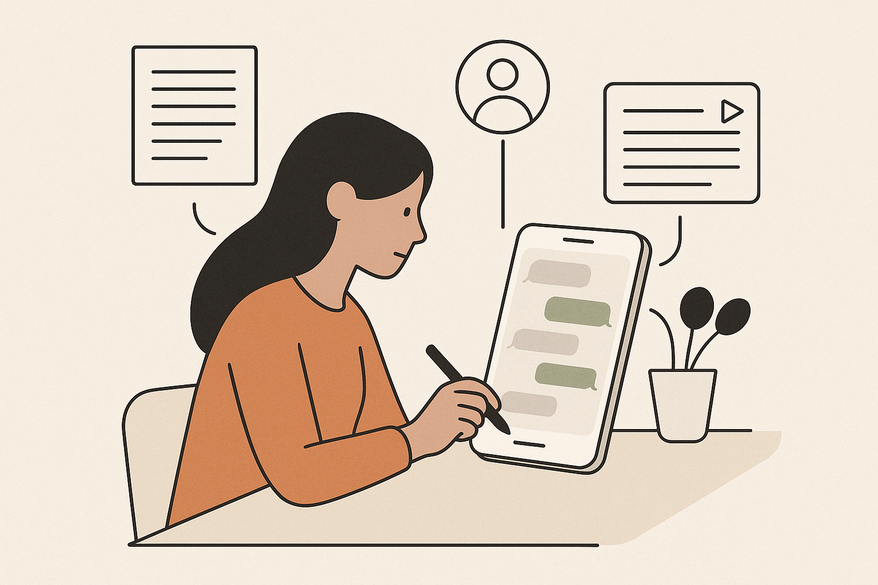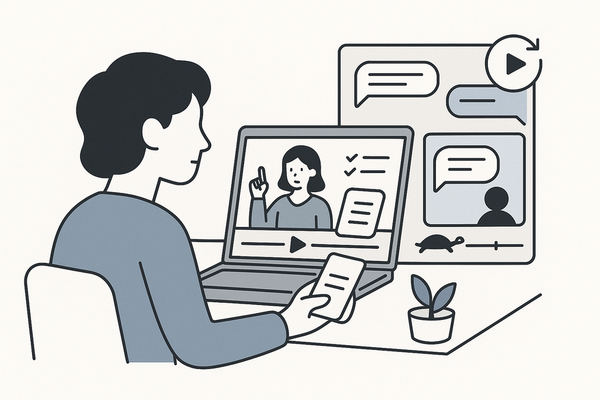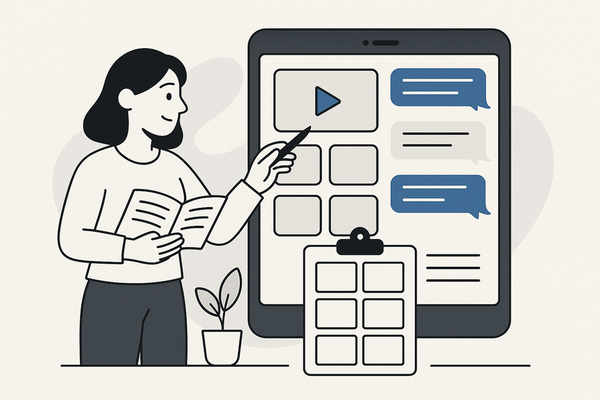10 Essential Chat Story Script Writing Tips for Mobile Fiction
Discover 10 essential chat story script writing tips to craft engaging mobile fiction. Learn structure, pacing, and character development for irresistible stories.

Estimated reading time: 8 minutes
Key Takeaways
- Voice Consistency helps readers identify characters instantly.
- Early Conflict & Micro-Cliffhangers hook readers with suspense.
- In-Format Exposition uses chat features to reveal backstory without narrative breaks.
- Pacing & Timing via bubble length and typing indicators maximizes tension.
- Rigorous Editing ensures every message advances the story and sustains rhythm.
Table of Contents
- Understanding Chat Stories
- Key Elements of a Chat Story Script
- Chat Story Script Writing Tips
- Examples & Mini Case Studies
- Step-by-Step Process for Crafting a Chat Story
- Tools & Resources
- Common Mistakes & How to Avoid Them
- Conclusion
- Call-to-Action
Understanding Chat Stories
Chat stories are told exclusively through text bubbles—there's no traditional narration, so every message must imply setting, character, and plot. This constraint makes every message count.
Brief History and Evolution
- 2015: Prerna Gupta and Parag Chordia launch Hooked, pioneering tap-to-advance fiction.
- 2017: Hooked tops the App Store charts, proving the format’s bingeable appeal.
- Platforms like Yarn and Wattpad Tap soon follow, expanding genres from horror to romance.
Why Script Writing Matters
With no exposition paragraphs, scripts must deliver conflict, POV, and development through concise, believable exchanges—where even a pause or typing indicator becomes a narrative device.
Key Elements of a Chat Story Script
To create a compelling chat story, focus on four core elements:
Dialogue & Realism
- Use abbreviations, typos, and emojis to craft authentic voices.
- Ensure every bubble sounds natural and advances the plot.
Structural Elements
- Pacing: Short beats and cliffhangers build a clear arc—rising action → climax → resolution.
- Tone: Punctuation and timing cues (ellipses, exclamation points) signal genre.
- Timing Cues: Read receipts and typing indicators convey urgency or doubt.
Engagement Tips
- End most bubbles on questions or surprises to prompt the next tap.
- Deliver high-tension reveals in single messages to maximize impact.
Chat Story Script Writing Tips
- Voice Consistency
- Assign each character a signature emoji set, punctuation habit, and typing speed.
- Consistent patterns let readers identify speakers instantly.
- Exposition In-Format
- Embed backstory via forwarded texts, mock screenshots, or “voice note” summaries.
- Maintain the chat format—avoid breaking into narrative paragraphs.
- Conflict Early
- Introduce the central problem within the first 10–12 messages to hook readers fast.
- Micro-Cliffhangers
- End bubbles on unfinished thoughts, cryptic attachments, or sudden silence.
- Keep momentum by triggering taps at key reveals.
- Subtext & Miscommunication
- Use typing indicators and silent pauses as narrative devices.
- Let characters lie or talk past each other to amplify tension.
- Pacing via Bubble Length
- Alternate rapid one-liners with slightly longer revelations.
- Limit to 2–3 sentences per bubble for tight pacing.
- POV Management
- Limit active speakers or clearly label parallel threads.
- Avoid overlapping dialogue without visual cues.
- Genre Exploitation
- In horror, drip-feed information with attachments or status updates.
- Use chat constraints to heighten dread or suspense.
- Character Prototyping
- “Interview” your characters in practice chats to refine voice before drafting.
- Prototype reveals motivations and conflicts early.
Examples & Mini Case Studies
Hooked-Style Horror
Two friends text late at night. Delayed replies and read receipts build dread. A photo bubble shows a masked figure outside the house. A location tag mismatch reveals the figure is inside—an abrupt micro-cliffhanger that prompts immediate taps.
Yarn Branching Simulation
A single-thread narrative uses “unsent” messages and deleted replies. Without true branching, these cues create perceived agency—readers feel they influence events through hidden choices.
Step-by-Step Process for Crafting a Chat Story
- Plan Phase
- Brainstorm premise with clear stakes: define conflict, goals, setting, and POV.
- Develop character profiles: secrets, texting style, and dynamics.
- Prototype voices with chatbot-assisted interviews.
- Outline beats: orientation → complication → rising action → climax → resolution.
- Conversation Flow Setup
- Choose single vs. parallel threads.
- Sequence bubbles and mark cliffhanger endpoints.
- Plan attachment spots and UI cues (typing indicators, read receipts).
- Assign delays or “message left on read” for emotional impact.
- Conflict & Suspense Design
- Anchor the core problem within the first 10 messages.
- Escalate tension through reversals delivered as short messages or pinned screenshots.
- Drafting
- Ensure each bubble has one purpose: plot advance, character reveal, or question.
- Maintain consistent voice and avoid overusing speaker tags.
- Revise & Edit
- Remove redundancies and replace exposition with subtext.
- Optimize cliffhanger placement at bubble and scene breaks.
- Read aloud on a phone to test tap pacing and suspense.
- Verify the narrative arc: clear setup, steady escalation, impactful climax, and earned resolution.
Tools & Resources
- Scripts & Formatting: Mobile-first editors or notes apps that simulate chat bubbles (e.g., iMessage chat video generators).
- Character Development: Chatbot-assisted interview tools reveal motivations (see AI chat script generator).
- Learning Communities: Compare top fake chat video makers on Vidulk blog.
To prototype your chat story scripts into complete messaging-style videos, explore Vidulk’s intuitive interface and auto-generation features. It simplifies production so you can focus on narrative while the app handles script formatting and export. Vidulk - Fake Text Message Story App
Common Mistakes & How to Avoid Them
- Cliché Dialogue: Use specific details and varied vocabulary to replace generic lines.
- Over-Explaining: Show world-building through delays and attachments, not exposition blocks.
- Speaker Overload: Limit voices or separate parallel threads visually.
- Long Text Blocks: Break exposition into scannable messages.
- Weak Stakes: State conflict and goals within the first dozen messages.
- Flat Structure: Map every message to orientation, complication, or resolution.
Conclusion
You now have the core chat story script writing tactics: distinct voices, early conflict, engineered micro-cliffhangers, subtext-driven suspense, pacing control, in-format exposition, and rigorous editing. Apply these strategies to craft a 60–90 bubble scene with a clear conflict and three planned cliffhangers. Test it on your phone’s tap interface and refine until your narrative rhythm and suspense shine.
Call-to-Action
Subscribe or follow for more chat story writing tips and mobile fiction insights. Dive deeper into narrative structure and core story elements:
FAQ
- What makes chat stories different from traditional prose? Chat stories rely solely on dialogue bubbles and UI cues, requiring authors to convey setting, emotion, and plot through concise exchanges.
- How do I hook readers quickly? Introduce your central conflict within the first 10–12 messages and employ micro-cliffhangers to prompt taps.
- Can I use media within bubbles? Yes—images, attachments, and typing indicators serve as narrative devices, but use them sparingly to maintain suspense.
- What tools are best for drafting chat scripts? Use mobile-first editors or specialized chat video generators to test pacing and bubble layout in real time.





